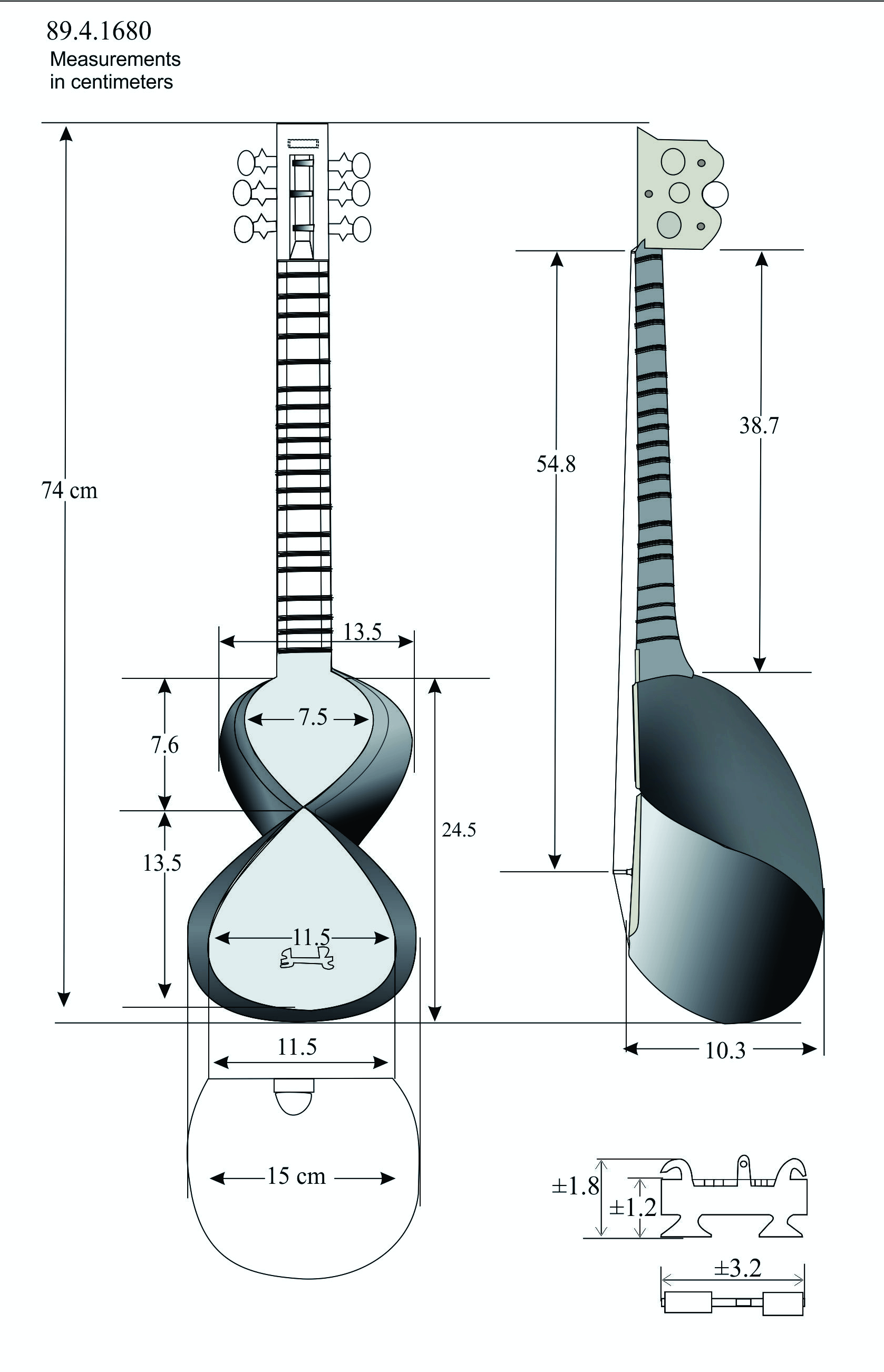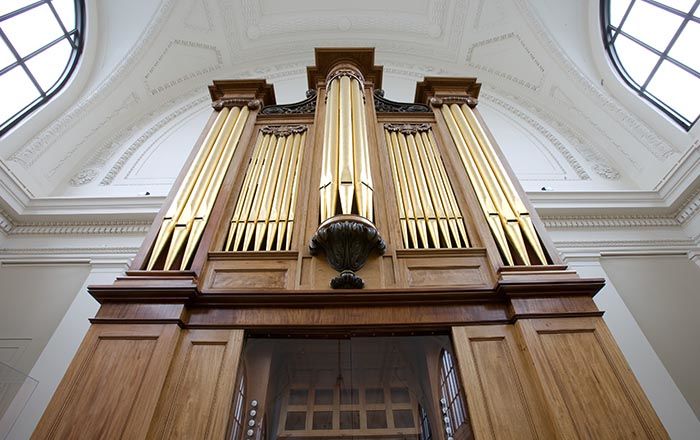Tār-e Jorre (small tār)
A small, child sized, long-necked lute with membrane belly. Iranian tārs have a belly composed of two heart-shaped surfaces with the points joined, while those of the Caucasus mountains have an elliptical upper section.
In addition to lutes like the ūd with large, vaulted backs, wood bellies, and relatively short, unfretted necks, the Middle East possesses a large number of long necked lutes. These may be identified by carved or carvel-built (strips of wood glued together) tear-shaped bodies, fretted necks, wooden bellies, and pegblocks which extend from the lute's neck (sāz, tanbūr types), or by bodies that incorporate a waist, bipartite, parchment-covered bellies and openwork pegboxes (tār type). Linguistic connections may be made between these instrument names and those from other cultures; for example, tanbūr and tambūrā (India); tār and sitar (India), among others.
This image cannot be enlarged, viewed at full screen, or downloaded.
This artwork is meant to be viewed from right to left. Scroll left to view more.


.jpg)

